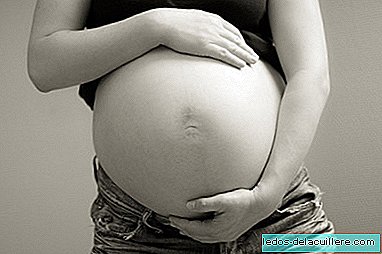
Currently, between 0.2% and 4% of all pregnancies in western industrialized countries are complicated by cardiovascular disease (CVD) and the number of patients suffering from heart problems during pregnancy increases, as extracted from the article published in the Clinical Practice Guidelines of the European Society of Cardiology (ESC) for the treatment of cardiovascular diseases during pregnancy.
In fact, according to the European Registry of Pregnacy and Cardiac Disease (ROPAC), which has been presented at the Congress of Cardiovascular Diseases SEC 2013, The first cause of mortality during pregnancy and childbirth is due to cardiac pathology.
It has been possible to reach this consensus conclusion, thanks to various studies on complications arising from the existence of a cardiac pathology (whether congenital or acquired)
Cardiac complications during pregnancy
The risk factors such as smoking, stress, obesity, high blood pressure (hypertension) and advanced age are direct causes of the appearance of these complications.
By increasing the incidence of these pathologies during pregnancy (especially in Western countries), research and clinical studies in this regard become more relevant. The combination between pregnancy and cardiovascular disease is a emerging pathology that is due to:
Women with congenital heart disease they reach adulthood very high, thanks to advances in treatment. When they decide to procreate, they are included in the “risk pregnancy” group, therefore it is advisable that counseling and treatment be initiated before pregnancy, so that patients at high risk are treated in specialized and multidisciplinary units.
The cardiac pathology acquired during pregnancy is due to the physiological changes may lead to the development of complications, as well as the existence of one or more cardiovascular risk factors (AHT, obesity, smoking, etc ...).
During the gestation period, blood volume, heart rate and cardiac output (amount of blood expelled from the heart) are increased and, in addition, there is a decrease in blood pressure, both systolic (during contractions of the heart) and the diastolic (with the heart in relaxation)
Heart disease and pregnancy
The woman with congenital and / or acquired heart disease (Tetralogy of Fallot, Single Ventricle, Mitral Stenosis, Aortic Stenosis, Cardiomyopathy, Ischemic Heart Disease, etc.) who is pregnant, may suffer complications during pregnancy, childbirth and / or postpartum, as a consequence of the changes that this state causes on your cardiovascular system.
To avoid such complications, the Spanish Society of Cardiology (SEC) recommends pregnant women, and especially those who already have heart disease, periodically monitor blood pressure, pointing in a notebook the figures to maintain control; a low-salt diet, quit smoking and try to lead as healthy a life as possible.
It can also happen that pregnant women without heart disease have a cardiovascular pathology during pregnancy, childbirth or pueperium (myocardium peri childbirth, coronary dissection, etc.). But in any case, this emerging problem is due approach from a multidisciplinary perspective: cardiologists, obstetricians, gynecologists, anesthesiologists, neonatologists and experts in fetal medicine.
The risk of each woman should be established based on the type of heart disease, her own functional status and the clinical situation. The goal is to track the pregnancy, and minimize the risks
This field of research, halfway between cardiology and obstetrics, began about five years ago as a result of an increasingly evident need for care.












